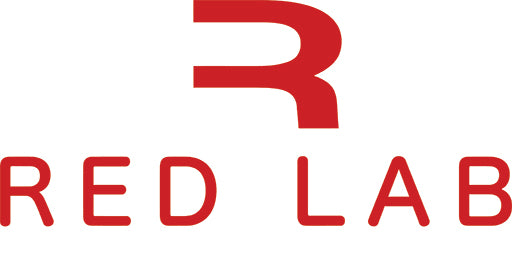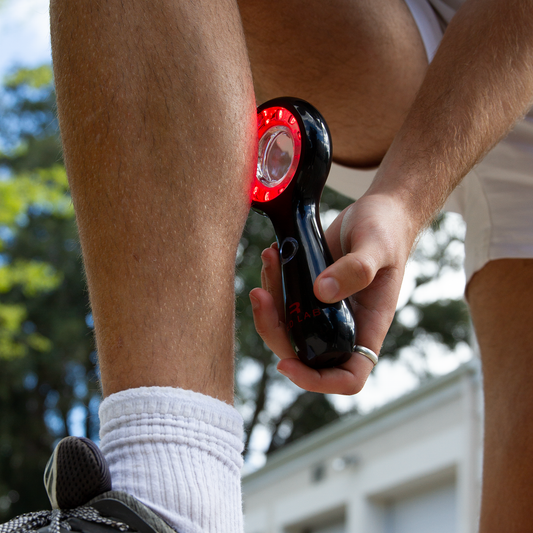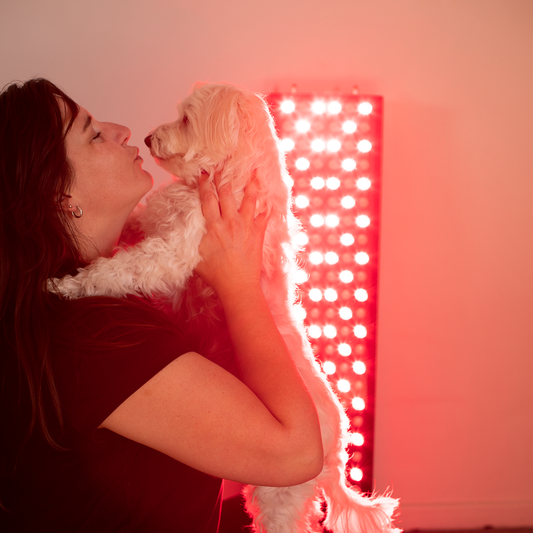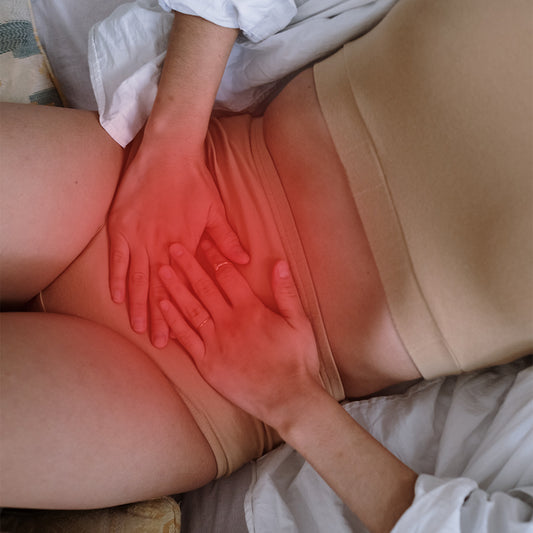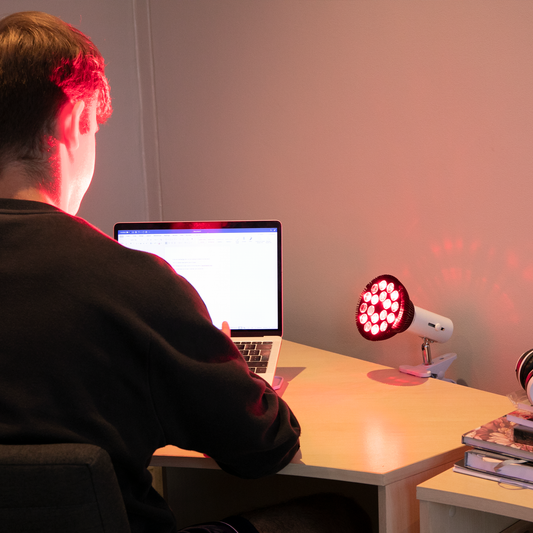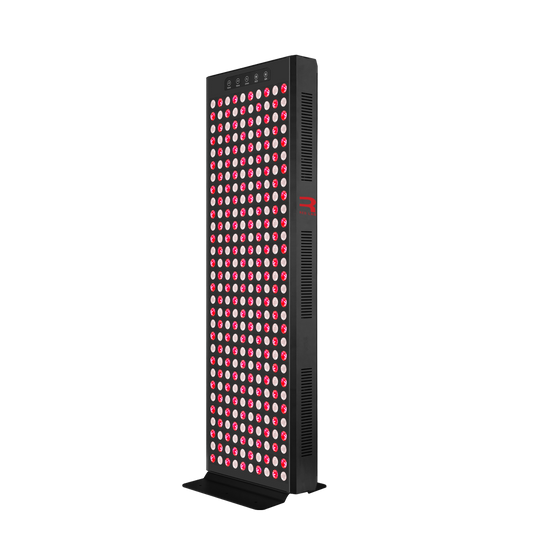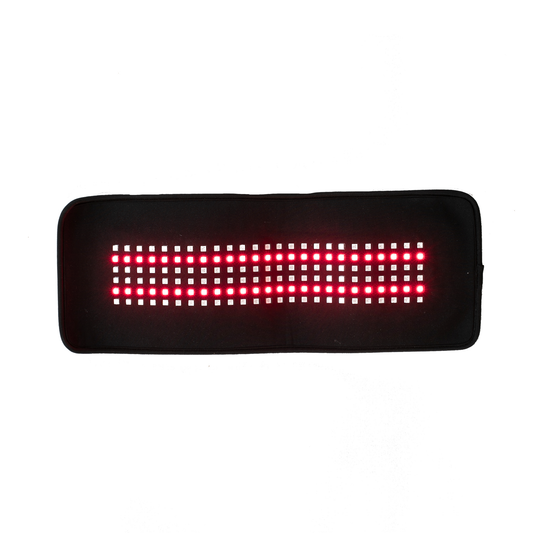How does Red and near-infrared light Therapy Work?
Red Light and Near Infrared Light fall into different light spectrums. The two are often thought to be the same, but they are really quite different. Red Light falls into the visible part of the light spectrum between 630-700 nm on the electromagnetic scale. Red Light wavelengths are an ideal length to penetrate skin cells and sebaceous glands, offering benefits for skin texture and tone, smoothing fine wrinkles, promoting collagen production and generally rejuvenating the appearance of skin.
Near Infrared wavelengths fall into the invisible part of the light spectrum between 700 and 1200 nm. Near Infrared (NIR) Light wavelengths (700-1100 nm) penetrate deeper into the tissue to deliver energy to the body’s cells and can pass through bone to assist with healing deep wounds, muscle aches, nerve injury or joint pain.
Devices with a combination of Red and Near-Infrared (NIR) wavelengths, such as our RED LAB in-studio lights and at-home-use devices, deliver both simultaneously, offering the most versatile range of use.
Your Skin is made up of 3 layers: the Epidermis, the Dermis and the Subcutaneous. The Epidermis is the outer layer, made up of non-living cells that form your body’s protective cover. These cells are constantly being shed and replaced by new ones. The new cells are made in the lower part of the Epidermis. These are called Keratinocytes which produce the tough, fibrous protein called Keratin.
The next layer is the Dermis. It is thicker and contains blood vessels, nerves and connective tissue. There are two main proteins in the Dermis or second layer of skin, namely Collagen and Elastin. Approximately 3/4 of the Dermis is made up of the Collagen protein, which is responsible for the strength and plumpness of the skin. Elastin is responsible mainly for the elasticity of the skin.
The next layer is the Subcutaneous. It is the layer that contains the fatty tissues and stores energy, provides warmth and a cushion.
People need certain wavelengths of light to thrive, much like plants need sunlight. Red Light Therapy translates the process of plant photosynthesis into the workings of human skin cells; stimulating the body’s own cells to build new proteins the same way plants use Chlorophyll to convert sunlight into cellular building blocks.
Your skin and other body tissues have the ability to absorb light and use it as a source of energy to stimulate cellular regeneration. The light rays that are emitted from Red and NIR LEDs are beneficial for your skin, as they contain no UV rays. The problem with getting these same light rays from the sun is that you also get the harmful UV rays. These harmful rays can do more damage to your skin than good. With Red Light Therapy, when the correct wavelengths of light are closely and intensely flowed into the body, some pretty startling things start to occur.
Collagen and Elastin are produced in cells called Fibroblasts. Inside these cells is a smaller cellular structure called Mitochondria. Mitochondria are responsible for converting nutrients into an energy carrier known scientifically as Adenosine Triphosphate (ATP). This ATP fuels the cell’s activities; it basically gives the cells the needed energy to do their job. This is the reason Mitochondria are frequently referred to as the powerhouse of the cell.
Red and Near Infrared LED lights send light rays into the Fibroblast cells, which in turn excite the Mitochondria into producing in some cases up to 10 times more ATP, but usually 2 to 4 times. This fuels the cell’s activities, which causes more of the needed Collagen and Elastin to be produced, as well as other needed materials for the skin. The Collagen plumps up the skin to fill in fine lines and wrinkles while the Elastin helps to firm skin that has begun to sag. This whole light therapy process results in skin that appears more youthful, smoother, healthier and more radiant!
Infrared Light is the heat people feel when exposed to the sun. Infrared light penetrates to the inner layers of the skin at about 2 to 7 centimeters deep. Hence, it reaches the muscles, nerves and even the bones. This non-invasive, natural, and painless treatment has shown immense health benefits, from pain relief to reducing inflammation without damaging the skin through UV radiation or other invasions.
Many studies have shown that a frequency of Infrared light, with wavelengths from 700 to 1,000 nanometers, is best used for healing inflammatory conditions. Infrared light is absorbed by the photoreceptors in cells. Once absorbed, the light energy kickstarts a series of metabolic events, triggering several natural processes of the body on a cellular level.
Infrared light therapy is applied in the treatment of various health conditions, including back pain, arthritis, bursitis, blunt trauma, muscle strain, carpal tunnel syndrome, neck pain, back pain, diabetic neuropathy, rheumatoid arthritis, temporomandibular joint pain (TMJ), tendonitis, wounds, sciatica, and surgical incisions.
Our Products
-
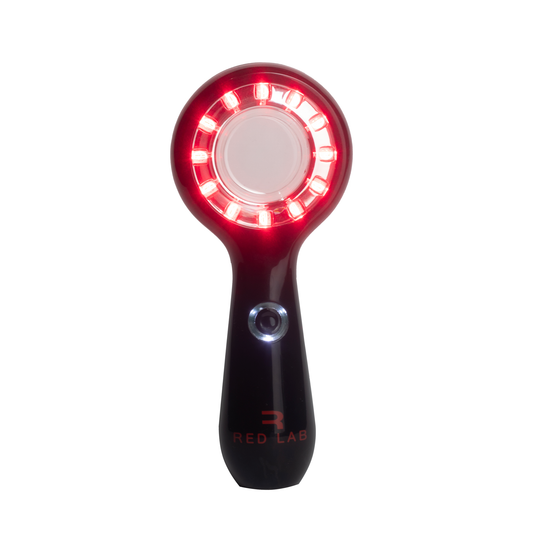 Sold out
Sold outHandheld Unit
Regular price R 1,950.00Regular priceUnit price perR 2,999.00Sale price R 1,950.00Sold out -
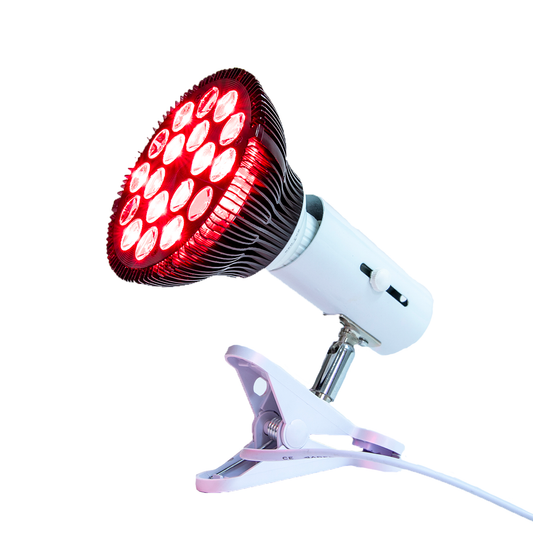 Sold out
Sold outTarget Light
Regular price R 1,795.00Regular priceUnit price per
